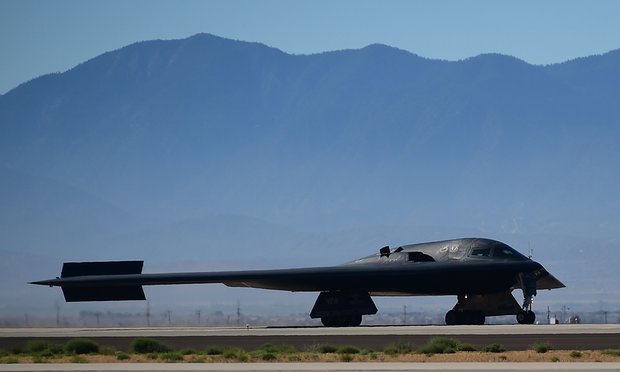US planes strike Isis training camps in Libya after declaring end to bombing

2017-01-19T17:15:00+00:00
US warplanes have again struck Islamic State targets in Libya, a month after Washington declared a successful conclusion to its air campaign there.
B-2 bombers and drones attacked and destroyed two Isis training camps 45km south-west of Sirte, the Pentagon said on Thursday. Also targeted were unnamed fighters who the outgoing press secretary, Peter Cook, said “fled to the remote desert camps from Sirte in order to reorganize”.
Cook said the military was evaluating the results of the strikes but said an initial assessment “indicates they were successful”.
The airstrikes did not appear to signal the resumption of a sustained air campaign, but Cook said that the US “remains prepared to further support Libyan efforts to counter terrorist threats and to defeat Isil in Libya”, using an alternative acronym for the group also known as Daesh and Isis.
It is likely to be the last wave of military strikes under the presidency of Barack Obama, who committed US airpower to toppling dictator Muammar Gaddafi in 2011.
Gaddafi’s death left a vacuum that Libyan politicians have struggled to fill. Into the void has stepped Isis, which overran swaths of territory including the port city of Sirte.
After a request for help from the Washington-backed Libyan unity government, US bombers and attack helicopters harassed and ultimately dislodged Isis from Sirte after a five-month campaign that included the amphibious-assault ship USS Wasp. The US declared a successful end to the bombing on 20 December.
On 5 January, in remarks defending the Obama administration’s foreign policy, the outgoing secretary of state, John Kerry, asserted: “We have particularly helped push back against any number of violent extremist groups, including our efforts most recently to liberate Sirte in Libya from the clenches of Daesh.”
The Pentagon portrayed Wednesday night’s airstrikes as a mop-up effort emanating from the Sirte campaign, suggesting that the US bombardment went unfinished.
There was speculation in the closing stages of the battle that Isis units had escaped the town into the vast Saharan desert south of the town. But the US strikes appear to underline that Isis remains a threat in Libya, despite the deployment of US, British and French special forces to combat them.
Incoming president Donald Trump, who takes office on Friday, is reportedly receiving aggressive but unspecified plans to intensify US war efforts against Isis. It is unclear if they focus primarily on the remaining Isis strongholds in Iraq and Syria or aim to reignite the Libya campaign as well.
Cook said the US was “committed to maintaining pressure on Isil and preventing them from establishing safe haven. These strikes will degrade Isil’s ability to stage attacks against Libyan forces and civilians working to stabilize Sirte, and demonstrate our resolve in countering the threat posed by Isil to Libya, the United States and our allies.”
Analysts say the US airstrikes are proof that many Isis formations remain in Libya’s desert interior, taking advantage of the country’s chaotic civil war, and are likely to target nearby oil fields.
“[Isis] will certainly remain a threat in Libya. I expect them, after some consolidation, to become increasingly active. They will go at first after easy targets, like the hydrocarbon infrastructure in the Sirte Basin,” said Wolfgang Pusztai, analyst at America’s National Council for US Libya Relations and Austria’s former Libya defense attache.